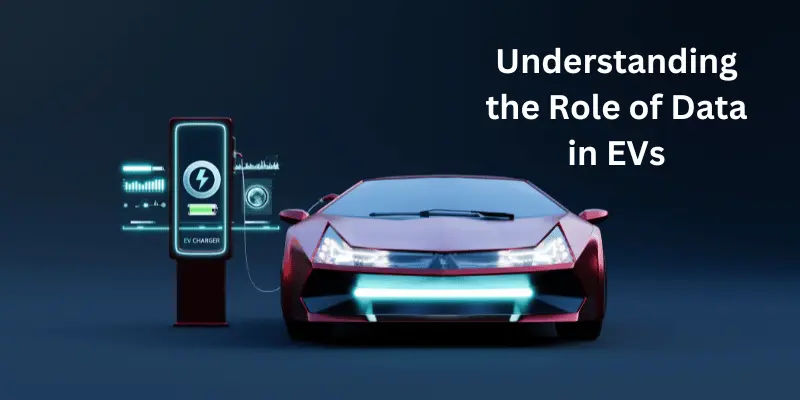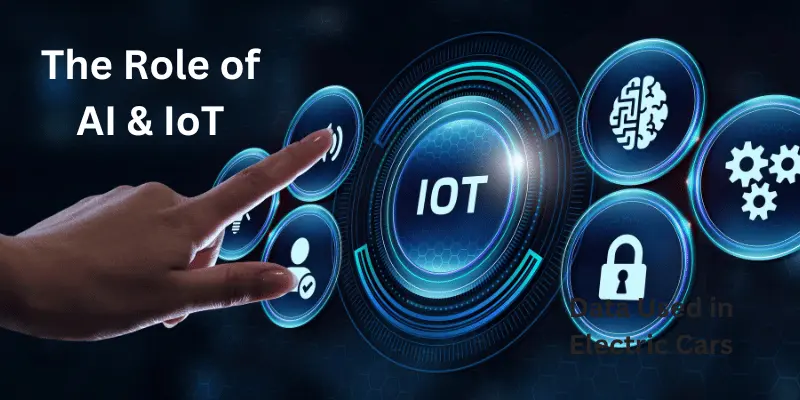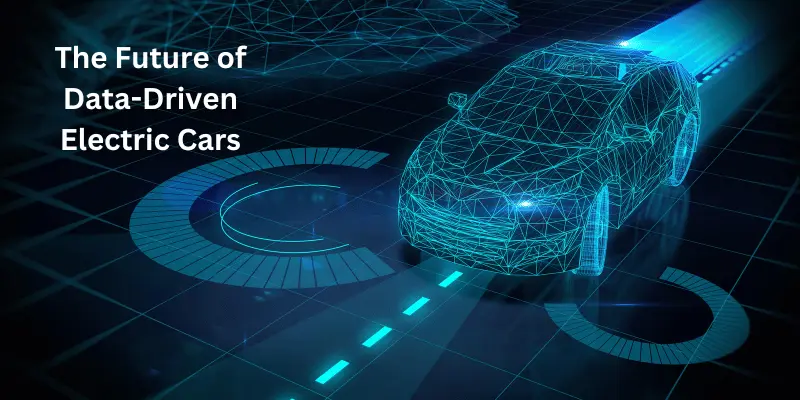What is the Data That Drives Your Electric Car? A Simple Guide
Published: February 16, 2025
Hey EV lovers! Do you know, What is the Data That Drives Your Electric Car? Learn with me in this simple guide.
Electric cars are becoming more popular than ever. With rising fuel prices and concerns about the environment, more people are choosing electric vehicles (EVs) as a cleaner and smarter option.
But have you ever wondered what makes these cars so efficient and intelligent? The secret lies in data!
Data plays a crucial role in how electric cars function, from managing battery performance to optimizing routes and ensuring safety.
Every time you drive an EV, countless pieces of information are being collected and analyzed to improve your experience.
In this article, we’ll break down how data powers your electric car in a simple and easy-to-understand way.
Whether you’re a car enthusiast or just curious, you’ll learn how smart technology is shaping the future of driving.
Understanding the Role of Data in EVs

What is Data in the Context of Electric Vehicles?
Data in electric vehicles refers to the continuous flow of information that helps improve their performance, efficiency, and safety.
This data includes details about battery health, driving behavior, route conditions, energy consumption, and much more.
Sensors, GPS, and onboard computers constantly gather and analyze this data to provide a smooth and optimized driving experience.
How Modern EVs Rely on Data for Efficiency and Performance
Electric vehicles use data in multiple ways to enhance their functionality:
- Battery Management: Data is used to monitor battery temperature, charge cycles, and energy consumption, ensuring a longer lifespan and efficient energy usage.
- Smart Navigation: EVs rely on real-time GPS and traffic data to calculate the best routes, saving time and conserving battery power.
- Driving Behavior Analysis: Sensors track acceleration, braking patterns, and speed to provide insights for better efficiency and safer driving.
- Predictive Maintenance: AI-driven data analytics detect potential issues before they become major problems, reducing the risk of breakdowns.
- Energy Optimization: EVs collect data to balance power distribution, enhancing regenerative braking and overall energy efficiency.
By utilizing data, modern electric vehicles become smarter, safer, and more reliable, making them an excellent choice for sustainable transportation.
Types of Data Used in Electric Cars
Electric cars rely on advanced data collection and processing to enhance their performance, efficiency, and safety.
Let’s explore the different types of data used in electric cars and why they are important.
Battery Data
The battery is the heart of an electric car, and monitoring its performance is crucial. Battery data includes:
- Charging Status: Shows how much charge is left and the estimated range. Helps drivers plan their trips.
- Battery Health: Tracks battery degradation over time. A well-maintained battery lasts longer and performs better.
- Efficiency: Measures energy consumption and helps optimize driving habits to extend battery life.
- Temperature Monitoring: Ensures the battery operates within a safe temperature range to prevent overheating or freezing.
- Fast Charging vs. Normal Charging: Helps users understand the impact of different charging speeds on battery longevity.
Why It Matters? Proper battery data management improves efficiency, extends battery life, and prevents unexpected breakdowns.
Navigation & GPS Data
Electric cars rely on GPS and navigation systems for real-time route planning. This data helps in:
- Smart Route Planning: Finds the shortest or most efficient route based on traffic conditions.
- Traffic Updates: Live data helps avoid congested roads, reducing travel time and energy consumption.
- Charging Station Locations: Shows nearby charging points, helping drivers avoid running out of charge.
- Terrain and Weather Conditions: Some EVs adjust energy usage based on road conditions, elevation, and temperature.
Why It Matters? Navigation data ensures efficient travel, reduces range anxiety, and enhances the overall driving experience.
Telematics Data
Telematics refers to remote data collection and vehicle tracking. This includes:
- Driving Behavior: Monitors speed, acceleration, braking patterns, and efficiency to improve driving habits.
- Remote Diagnostics: Alerts car owners about potential mechanical issues before they become serious problems.
- Location Tracking: Helps in fleet management, theft recovery, and roadside assistance.
- Energy Consumption Reports: Provides insights into energy usage to optimize driving styles and reduce costs.
Why It Matters? Telematics data improves safety, prevents breakdowns, and enhances energy efficiency.
Software & Firmware Data
Electric cars, like smartphones, receive regular software and firmware updates. These updates include:
- Performance Enhancements: Improves acceleration, battery efficiency, and overall driving experience.
- New Features: Some updates add autopilot capabilities, better infotainment systems, or enhanced safety features.
- Bug Fixes: Resolves software glitches that may affect the car’s operation.
- Security Patches: Protects against cyber threats, ensuring the car’s system remains secure.
Why It Matters? Regular updates keep the car running smoothly, add new features, and improve security.
Sensor & Safety Data
Electric cars use sensors and cameras to enhance safety and provide advanced driving assistance. Key safety data includes:
- Collision Avoidance: Sensors detect nearby vehicles or obstacles and assist in automatic braking.
- Lane-Keeping Assist: Uses cameras to ensure the car stays in the correct lane.
- Blind Spot Detection: Warns drivers about vehicles in hard-to-see areas.
- Autopilot & Adaptive Cruise Control: Uses AI and sensors to assist in semi-autonomous driving.
- Airbag & Crash Data: Records impact severity in case of an accident to improve future safety features.
Why It Matters? Sensor data makes driving safer by preventing accidents and assisting drivers in real-time.
Data plays a crucial role in making electric cars smarter, safer, and more efficient.
By collecting and analyzing battery performance, navigation details, telematics insights, software updates, and safety data, electric vehicles continue to improve.
As technology advances, future EVs will become even more intelligent, leading to better efficiency, enhanced safety, and a seamless driving experience!
How Data Improves Electric Vehicle Performance
Electric vehicles (EVs) are smart machines that use data to make driving smoother, safer, and more efficient.
From improving battery life to making maintenance easier, data plays a crucial role in enhancing the overall performance of an EV. Let’s take a closer look at how this happens.
Optimizing Battery Life & Range Estimation
One of the biggest concerns for EV owners is battery life and range—how far the car can go on a single charge. This is where data helps!
- Smart Charging Patterns: EVs track battery usage and suggest the best charging habits to extend battery life.
- Real-Time Energy Consumption: The car constantly analyzes how much energy is being used, helping drivers make better choices.
- Weather & Terrain Adjustments: EVs use data to adjust range estimates based on outside temperature and road conditions.
Enhancing Regenerative Braking with Real-Time Data
Regenerative braking is an awesome feature in EVs that recovers energy when you slow down. Instead of wasting energy as heat (like in traditional cars), EVs store it back in the battery.
- Data-Driven Efficiency: The car monitors speed, braking patterns, and road conditions to make regenerative braking smoother and more effective.
- Personalized Braking: Some EVs let drivers adjust the level of regenerative braking based on their driving style.
- Traffic Awareness: Smart systems use GPS and sensor data to predict when to slow down, maximizing energy recovery.
More efficient regenerative braking means less energy wasted, longer battery range, and a smoother drive.
Intelligent Driving Assistance & Predictive Maintenance
Modern EVs are packed with smart driving assistance features that make driving easier and safer. Data plays a key role in this:
- Adaptive Cruise Control: Uses real-time data to maintain a safe distance from other vehicles.
- Lane Assistance & Collision Avoidance: Sensors detect lane markings and nearby objects to prevent accidents.
- Predictive Maintenance: The car monitors itself and warns about potential issues (like battery health or tire pressure) before they become serious.
Smart driving assistance keeps you safe, while predictive maintenance helps prevent expensive repairs and unexpected breakdowns.
Data is like the brain of an electric car, constantly working behind the scenes to optimize battery life, improve braking, and enhance driving safety.
The more data an EV collects, the smarter it becomes—leading to better efficiency, longer lifespan, and a stress-free driving experience!
The Role of AI & IoT in EV Data Management

Electric vehicles (EVs) are not just about batteries and motors—they are smart machines that use Artificial Intelligence (AI) and the Internet of Things (IoT) to improve performance, efficiency, and safety.
Let’s break down how these technologies help make EVs better!
How AI Analyzes and Improves EV Performance
AI is like the brain of an EV, constantly analyzing data and making smart decisions to enhance the driving experience. Here’s how:
- Battery Optimization: AI studies charging habits, driving patterns, and weather conditions to extend battery life and improve range estimation.
- Smart Driving Assistance: AI helps in adaptive cruise control, lane keeping, and collision avoidance, making driving safer and smoother.
- Energy Efficiency: AI suggests the best routes and driving styles to reduce energy consumption, helping drivers go farther on a single charge.
- Predictive Maintenance: AI detects potential issues before they become serious, preventing costly repairs and unexpected breakdowns.
AI makes EVs smarter by improving battery life, boosting efficiency, and keeping you safe on the road.
The Internet of Things (IoT) & Cloud Connectivity in Smart EVs
The Internet of Things (IoT) connects an EV to the cloud, allowing real-time data sharing between the car, the driver, and service providers. Here’s how it helps:
- Remote Monitoring: EV owners can check battery status, locate charging stations, and even pre-condition the car’s temperature—all from a smartphone app!
- Over-the-Air (OTA) Updates: Just like a smartphone, EVs receive software updates that improve performance and add new features.
- Smart Navigation & Traffic Alerts: IoT enables live traffic updates and automatic rerouting, helping drivers avoid congestion.
- Fleet Management: Companies use IoT to track EV fleets, monitor charging status, and optimize routes for delivery vehicles.
IoT keeps your EV connected, updated, and running efficiently, making life easier for both individual drivers and businesses.
AI and IoT are transforming electric vehicles into intelligent, self-learning machines.
With AI optimizing performance and IoT ensuring seamless connectivity, EVs are becoming smarter, safer, and more energy-efficient—making them the future of driving!
Privacy and Security Concerns with EV Data
Electric vehicles (EVs) are packed with smart technology, constantly collecting and processing data to improve performance, safety, and user experience.
But with all this data comes an important question: How secure is your personal information?
Let’s explore how EV data is collected, the potential risks, and what manufacturers do to protect it.
How EV Manufacturers Collect and Store User Data
EVs gather a lot of data, including:
- Driving behavior: Speed, braking patterns, routes, and travel history.
- Battery and performance data: Charging habits, efficiency, and battery health.
- Location tracking: GPS data for navigation, charging station locations, and trip history.
- In-car infotainment and connectivity: Voice commands, phone contacts (if synced), and app usage.
Where is this data stored?
- Some data is stored inside the car (in the vehicle’s system).
- Some data is sent to cloud servers for remote monitoring and updates.
- Some data is shared with third-party services (e.g., navigation apps, insurance companies).
Understanding what data your EV collects helps you make informed decisions about privacy and security.
Potential Risks and Cybersecurity Measures in Place
With all this data being collected, there are some risks:
- Cyberattacks: Hackers could try to access an EV’s system to steal data or even control the vehicle remotely.
- Data misuse: If not properly secured, user data could be used for targeted ads or even sold to third parties.
- Location tracking concerns: Continuous GPS tracking raises privacy issues if not properly managed.
How are EVs protected?
To prevent these risks, manufacturers use advanced security measures like:
- Encryption: Protects data so that only authorized users can access it.
- Two-Factor Authentication (2FA): Adds an extra layer of security for remote access.
- Firewalls & AI-based threat detection: Blocks cyber threats before they reach the vehicle.
- Secure OTA (Over-the-Air) Updates: Ensures that software updates don’t introduce vulnerabilities.
As EVs become more connected, strong cybersecurity is essential to keep data safe and protect user privacy.
Importance of User Consent and Data Transparency
Users have the right to know how their data is being collected, used, and shared. That’s why:
- Manufacturers must be transparent: EV companies should clearly explain what data they collect and why.
- Users should have control: Drivers should be able to manage privacy settings and decide what data they want to share.
- Opt-in policies: Data sharing should be optional, with clear consent from the user.
Being aware of data policies ensures that you stay in control of your personal information while enjoying the benefits of a smart EV.
EVs are revolutionizing transportation, but data privacy and security must be a priority.
While manufacturers are working hard to protect user data, drivers should stay informed and take control of their privacy settings.
By understanding how your EV collects and uses data, you can enjoy a safe, smart, and secure driving experience!
The Future of Data-Driven Electric Cars

Electric vehicles (EVs) are getting smarter every day, and data is at the heart of this transformation.
From self-driving technology to smart energy grids, the future of EVs is all about better efficiency, safety, and connectivity. Let’s dive into what’s coming next!
Autonomous Driving: How Data Will Play a Crucial Role
Self-driving cars might seem like something from the future, but they’re already in development! These vehicles rely on huge amounts of data to navigate roads safely.
- AI and Machine Learning: EVs will use real-time data to recognize traffic signals, pedestrians, and obstacles.
- Sensor & Camera Data: Advanced sensors collect road and weather conditions to adjust driving accordingly.
- Vehicle-to-Vehicle (V2V) Communication: Cars will share data with each other to prevent accidents and manage traffic efficiently.
Autonomous EVs can reduce traffic, lower accidents, and make driving stress-free—all thanks to data!
Smart Grids & Vehicle-to-Grid (V2G) Technology
Imagine if your EV could send electricity back to the power grid when it’s fully charged! That’s the idea behind Vehicle-to-Grid (V2G) technology.
- Balance Energy Demand: EVs can store extra energy and return it to the grid when needed.
- Lower Charging Costs: Smart charging systems will use AI to charge EVs when electricity is cheapest.
- More Sustainable Power Use: EVs will help integrate renewable energy sources like solar and wind into the grid.
With V2G, EVs won’t just consume energy—they’ll also help power homes and cities!
Predictions for Future Innovations in EV Data Usage
The next decade will bring exciting advancements in how EVs use data. Here are some predictions:
- Ultra-Fast Charging: AI will optimize battery performance, allowing for charging in minutes instead of hours.
- Personalized Driving Experiences: EVs will learn from your habits and adjust seat positions, temperature, and routes automatically.
- Fully Connected Vehicles: Your EV will sync with smart home devices, traffic systems, and even weather forecasts.
- Blockchain for Data Security: Decentralized technology will make EV data safer and tamper-proof.
FAQs
Charging times depend on the type of charger. A standard home charger takes around 8-12 hours, while a fast charger can charge your EV to 80% in about 30-60 minutes.
Range varies by model, but most EVs offer anywhere from 150 to 370 miles on a full charge, depending on the battery size and driving conditions.
EVs typically have a higher upfront cost, but they save money in the long run due to lower fuel and maintenance costs. Incentives and tax credits can help reduce the initial price.
Yes, you can charge your EV at home using a standard 110V outlet or, for faster charging, a 240V Level 2 charger. Many EV owners install a Level 2 charger for quicker charging times.
Most EV batteries last between 8-15 years, depending on usage and care. Many manufacturers offer warranties that cover the battery for around 8 years or 100,000 miles.
If you run out of charge, you’ll need to tow your EV to the nearest charging station. However, most EVs have a low-battery warning system to alert you before it’s too late.
Charging costs vary by location and provider, but on average, it costs about $10 to $20 to fully charge an EV at home, depending on electricity rates.
Yes, EVs can be driven in cold weather, but cold temperatures can slightly reduce battery efficiency and range. Pre-conditioning the battery can help maintain performance.
Yes, EVs produce zero emissions while driving, which reduces air pollution. Additionally, when powered by renewable energy sources, they are much more eco-friendly than gas-powered vehicles.
It depends on where you live, but the number of charging stations is increasing rapidly. Many EVs offer apps that help you locate charging stations, and some can even reserve a spot in advance.
Final Thoughts
The future of EVs isn’t just about electric power—it’s about intelligent, data-driven mobility that’s safer, smarter, and more efficient!
Electric cars are evolving beyond just transportation—they’re becoming intelligent, connected, and energy-efficient systems. With AI, V2G, and next-gen data technology, EVs will soon be smarter, safer, and more sustainable than ever before.
Electric vehicles are no longer just about zero emissions—they’re becoming intelligent, connected, and highly efficient machines.
Thanks to AI, IoT, and real-time data, EVs are improving in performance, safety, and energy management.
From self-driving technology to smart grids and predictive maintenance, data is shaping the future of transportation.
While privacy and security remain important concerns, advancements in cybersecurity are ensuring that EVs remain both safe and smart.
As technology continues to evolve, we can expect EVs to get faster, smarter, and even more integrated into our daily lives.
Whether it’s autonomous driving, vehicle-to-grid energy sharing, or ultra-fast charging, the road ahead looks exciting!
Extra Insights on Electric Vehicles (EVs)
- Regenerative Braking: Saving Energy on Every Stop: Many electric vehicles are equipped with regenerative braking systems, which convert kinetic energy into electricity when you brake. This helps recharge the battery and increases overall efficiency, especially during city driving.
- Over-the-Air (OTA) Updates: Just like your smartphone, electric cars can receive over-the-air software updates. This means you can get new features, performance improvements, and bug fixes without visiting a dealership or service center.
- Low Maintenance Costs: Electric cars have fewer moving parts than gas-powered cars, which means less wear and tear and lower maintenance costs. You won’t have to worry about oil changes or exhaust system repairs.
- Silent Driving Experience: One of the best things about driving an EV is the quiet ride. Without the noise of an internal combustion engine, EVs offer a smooth, peaceful driving experience.
- Carpool Lane Access: In some regions, EVs are allowed to drive in carpool lanes even with just one passenger, helping to reduce commute times and promote sustainable transportation.
- Battery Recycling Programs: EV manufacturers are developing programs to recycle old batteries, ensuring that they don’t end up in landfills. Recycled batteries can be used for new EVs or in energy storage systems for homes and businesses.
- Energy-Efficient Driving Tips: To maximize range, try driving at a consistent speed, using eco-driving modes, and avoiding rapid acceleration. Regenerative braking can help recharge your battery during stops.
- Charging Apps & Networks: Many electric car owners use apps like PlugShare and ChargePoint to find nearby charging stations. These apps also let you check station availability, prices, and even book charging slots in advance.
- Growing EV Incentives: Many governments offer incentives to encourage EV adoption. These can include tax rebates, reduced registration fees, or access to special parking spots.
- Future Battery Advancements: Battery technology is constantly improving, which means future EVs could have longer ranges, faster charging times, and even lower costs. Solid-state batteries, a promising new technology, may make EVs even more efficient in the coming years.

- Be Respectful
- Stay Relevant
- Stay Positive
- True Feedback
- Encourage Discussion
- Avoid Spamming
- No Fake News
- Don't Copy-Paste
- No Personal Attacks



- Be Respectful
- Stay Relevant
- Stay Positive
- True Feedback
- Encourage Discussion
- Avoid Spamming
- No Fake News
- Don't Copy-Paste
- No Personal Attacks





